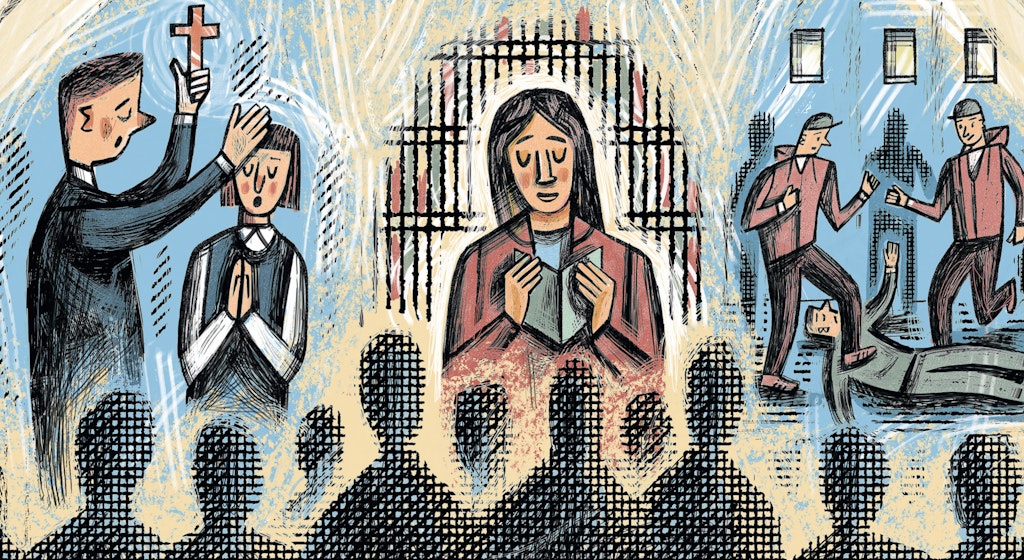Which gender are you: Neutrois or Two-Spirit?
A brief guide to the British Film Institute’s 22 genders
It’s been three and a half years since New York City legally recognised 31 different gender identities. These were as follows:
- Bi-gendered
- Cross-dresser
- Drag King
- Drag Queen
- Femme Queen
- Female-to-Male
- FTM
- Gender Bender
- Genderqueer
- Male-to-Female
- MTF
- Non-Op
- HIJRA
- Pangender
- Transexual/Transsexual
- Trans Person
- Woman
- Man
- Butch
- Two-Spirit
- Trans
- Agender
- Third Sex
- Gender Fluid
- Non-Binary Transgender
- Androgyne
- Gender Gifted
- Gender Blender
- Femme
- Person of Transgender Experience
- Androgynous
Only in America, I thought. Surely no public body in Britain would be susceptible to such absurdity. Some of the NYC identities were obvious, some were silly, and some were genuinely perplexing. I particularly liked the option for lexicological pedants (“Transexual/Transsexual”).
What is HIJRA when it’s at home? It means someone in South Asia whose birth sex is male but who identifies as female or as neither male nor female. Alternatively, it can mean a eunuch.
What is Non-Op? Someone who has chosen not to undergo sex reassignment surgery. Presumably this would include those “chicks with dicks” who used to advertise their services in New York sex newspapers back in the 1990s.
Of all these various identities, I was particularly intrigued by Gender Gifted. Google offered no authoritative definition, but the online satirical Urban Dictionary came up with a primary definition of: “Man with a huge dick”, as in “I’m a grower not a shower. I’m gender gifted.” Which man wouldn’t choose that definition, I wonder? However, its more serious suggestion was the tertiary definition: “Gender Gifted refers to a person whose capacity for gender expressionexceeds the binary. It is a positive term and can be applied to anyone who enjoys challenging cis-gendered normatives, whether it be in frame of mind, in presentation, or as an ally to loved ones who challenge the binary gender divide.”
I can now disclose that something similar to this catalogue of absurdity has reached our own shores. The British Film Institute, which organises the London Film Festival, asked me a few questions when I recently applied for press accreditation. When it came to a question about gender, I was offered the following selection from a drop-down list:
- Male
- Female
- I prefer to use my own term
- Agender/Neither
- Androgyne
- Androgynous
- Bigender
- Female to Male/FTM
- Male to Female/MTF
- Gender Fluid
- Gender Nonconforming
- Gender Questioning
- Gender Variant
- Genderqueer/Nonbinary
- Neutrois
- Pangender
- Transgender
- Transfeminine
- Transmasculine
- Two-Spirit
- Prefer not to say
- Other term
What, no option for “Confused”?
Is some BFI bureaucrat trying to catch me out in an act of cultural appropriation?
So, the BFI recognises not 31 but a mere 22 gender identities. One wonders the purpose of such an exercise. Is the BFI performing a socially responsible role as a proxy census-taker? Is it simply trying to reach out to members of the press as a demonstration of empathetic customer service? Or perhaps there are quotas for the number of applicants for each specific identity. Surely all of these categories could be covered by a simple choice between male, female, and transgender/nonbinary? Whose job is it to read the answers and what practical actions will be taken as a result of acquiring this knowledge?
Of course, it is all a nonsense. Without thinking, I rather sheepishly chose “Male” – sadly, there wasn’t an option for “Pale, White and Stale”, which is an appalling instance of exclusion, needless to say.
I was intrigued by “Neutrois”, which is “a non-binary gender identity which is often associated with a ‘neutral’ or ‘null’ gender. It may also be associated with genderlessness, and shares many similarities with agender – people who consider themselves neutrally gendered or genderless, but some may identify as both, while others may prefer one term or the other.”
“Pangender” means someone “whose gender identity is not limited to one gender and may encompass all genders at once” – which sounds rather burdensome.
And then there is “Two-Spirit”: “Two-Spirit (also two spirit or, occasionally, twospirited) is a modern, pan-Indian, umbrella term used by some Indigenous North Americans to describe Native people in their communities who fulfill a traditional third-gender (or other gender-variant) ceremonial and social role in their cultures.”
I wonder how many third-gender ceremonialists are living in London and are members of the arts press. I’ve always fancied being a bit of a shaman, so maybe now is the time for me to come out.
But is it a trick? Is some BFI bureaucrat trying to catch me out in an act of cultural appropriation? Never mind. Next year, I promise to choose “Two-Spirit” as my gender identity and see what happens.
Enjoying The Critic online? It's even better in print
Try five issues of Britain’s newest magazine for £10
Subscribe














